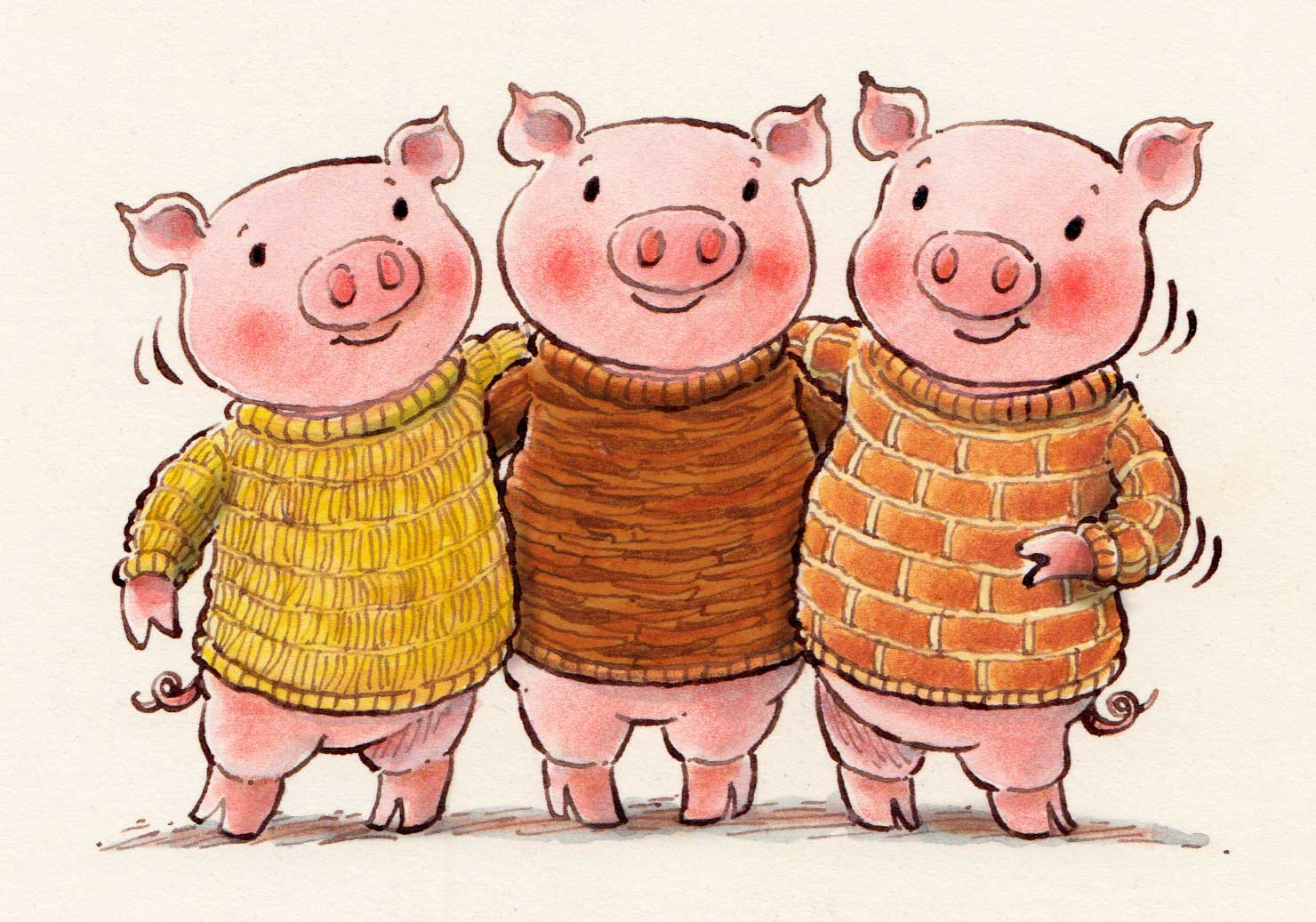The timeless tale of "The Three Little Pigs" has captivated audiences for generations. This beloved story, rich in moral lessons and engaging characters, has transcended its origins as a children's fable to become a cultural touchstone. In our digital age, the story's charm has been beautifully preserved and reimagined through a variety of videos. Each adaptation offers a unique spin on the classic narrative, showcasing the pigs' adventures and their confrontations with the Big Bad Wolf.
As we delve into the realm of videos of the three little pigs, we encounter a delightful array of interpretations that range from animated shorts to live-action retellings. These visual adaptations not only entertain but also provide an excellent opportunity for parents and educators to instill values such as hard work, perseverance, and the importance of community. In this article, we will explore various aspects of these videos, including their educational value, artistic styles, and the impact they've had on contemporary culture.
Join us as we embark on a journey through the world of the three little pigs, examining how these videos have brought this classic story to life in ways that resonate with both young and old. With a rich tapestry of creativity at our fingertips, let's uncover the magic hidden within each frame of these enchanting videos.
What Are the Different Adaptations of the Three Little Pigs Videos?
The story of the three little pigs has been adapted countless times in various formats. From traditional animations to modern retellings, each version captures the essence of the original tale while introducing unique elements. Some popular adaptations include:
- Classic animated films featuring vibrant characters and catchy songs.
- Modern animated series that infuse humor and contemporary themes.
- Live-action adaptations that bring a new level of realism to the story.
- Educational videos designed to teach children about resilience and teamwork.
How Do Videos of the Three Little Pigs Enhance Learning?
Videos of the three little pigs serve as an engaging educational tool. They help children grasp important lessons while maintaining their interest. Some key educational benefits include:
- Visual Learning: Children often learn better through visual stimuli, making animated videos particularly effective.
- Moral Lessons: The story teaches valuable life lessons such as hard work, determination, and the significance of friendship.
- Creativity and Imagination: Watching various adaptations encourages children to think creatively and imagine their own versions of the story.
Why Are Videos of the Three Little Pigs So Popular?
The enduring popularity of videos featuring the three little pigs can be attributed to several factors:
- Nostalgia: Many adults grew up with the story, making it a cherished part of their childhood.
- Universal Themes: The themes of perseverance and teamwork resonate with audiences of all ages.
- Adaptability: The story can be retold in countless ways, each adaptation catering to different tastes and preferences.
What Are the Most Iconic Videos of the Three Little Pigs?
Several adaptations of the three little pigs have left an indelible mark on popular culture. Some of the most iconic videos include:
- Walt Disney's Animated Short (1933): A classic rendition that introduced catchy songs and memorable characters.
- Three Little Pigs (1933) by Warner Bros: A humorous take on the story with a distinct animation style.
- The Three Little Pigs (1993): A modern adaptation that focuses on themes of friendship and collaboration.
How Do Different Cultures Interpret the Story?
Across the globe, different cultures have embraced the story of the three little pigs, often adding their own unique twists. For example:
- In Japan: The story is sometimes told with a focus on teamwork between the pigs.
- In Africa: Variations often emphasize the importance of community and working together against adversity.
- In Europe: Many versions highlight the cunning nature of the wolf and the cleverness of the pigs.
What Role Do Animations Play in Modern Storytelling?
Animations have revolutionized the way stories are told, especially for younger audiences. Some significant contributions include:
- Engagement: Animated videos capture children's attention, encouraging them to explore stories further.
- Accessibility: Animation allows for stories to be shared across diverse platforms, making them more accessible.
- Inclusivity: Animations often showcase diverse characters and narratives, promoting inclusiveness in storytelling.
What Can Parents Learn from Videos of the Three Little Pigs?
Parents can glean valuable insights from videos of the three little pigs that can be applied to their own parenting practices:
- Importance of Hard Work: The tale emphasizes that success comes from diligence.
- Value of Planning: Each pig's approach to building their house teaches the importance of foresight and preparation.
- Resilience in the Face of Adversity: The pigs’ determination to outsmart the wolf serves as a model for overcoming challenges.
What Are Some Creative Activities Inspired by the Three Little Pigs Videos?
Incorporating the story of the three little pigs into creative activities can enhance children's understanding and enjoyment. Here are some ideas:
- Storytelling Sessions: Encourage children to create their own versions of the story.
- Craft Projects: Have kids build houses out of various materials, mimicking the pigs' constructions.
- Drama and Role Play: Children can act out scenes from the story, enhancing their understanding of character motivations.
Conclusion: Why Videos of the Three Little Pigs Will Endure
In conclusion, videos of the three little pigs continue to captivate audiences with their rich storytelling and timeless themes. As we’ve explored, these adaptations not only entertain but also serve as valuable educational tools that teach important life lessons. The enduring appeal of this classic tale ensures that it will remain a beloved part of childhood for generations to come, inspiring creativity, resilience, and the spirit of teamwork among young viewers.



